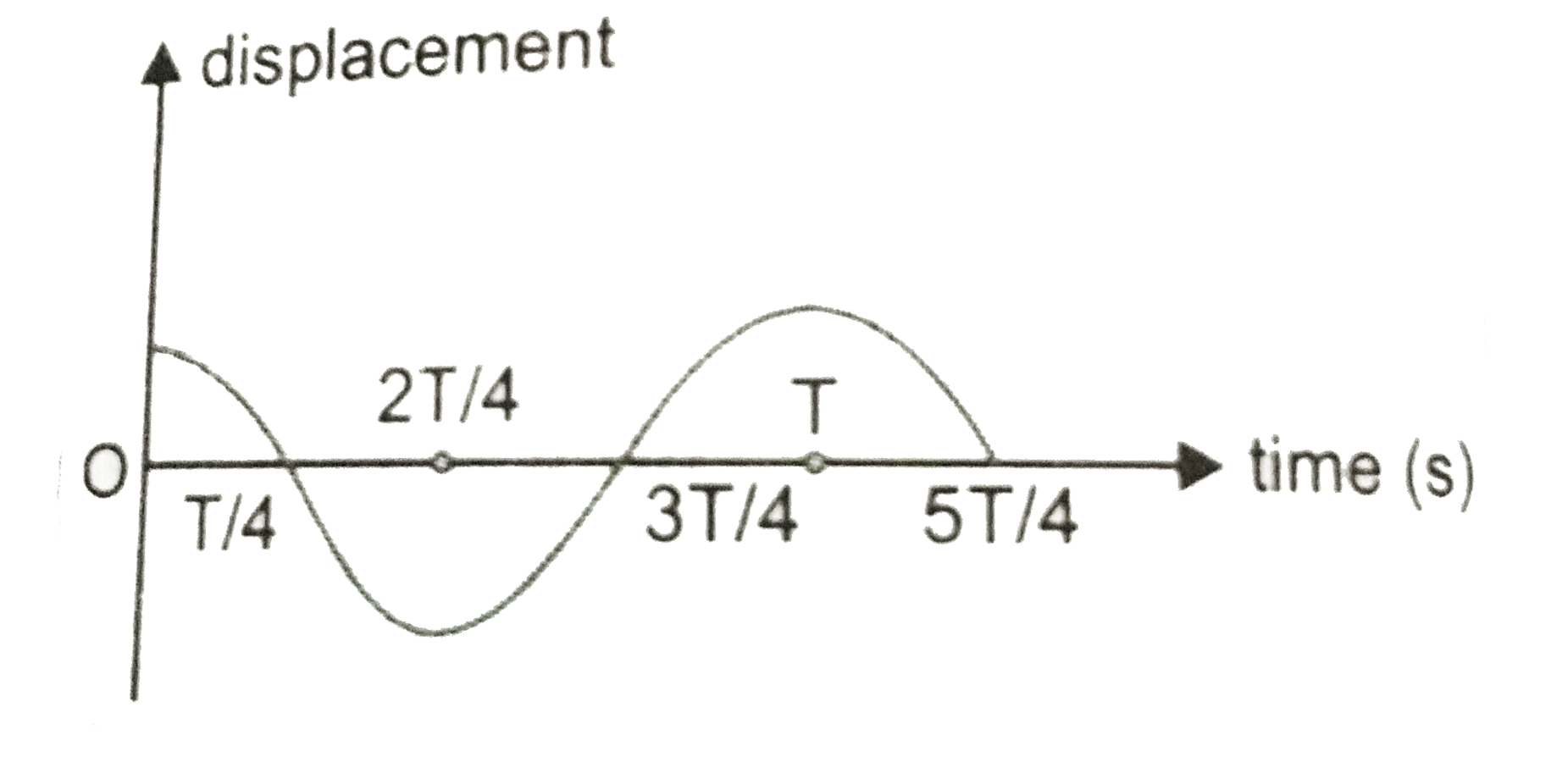Which of the following is/are not SHM?
y=Acosωt
y=Asinωt
y=Asin3ωt
y=AekT
The correct Answer is:D
To determine which of the given equations does not represent Simple Harmonic Motion (SHM), we need to analyze each equation based on the condition that the acceleration a must be directly proportional to the negative of the displacement y from the mean position. Mathematically, this can be expressed as:
a=−ky
where k is a positive constant.
Let's analyze each option step by step:
Step 1: Analyze the first equation y=Acos(ωt)
1. Calculate Velocity:
v=dydt=−Aωsin(ωt)
2. Calculate Acceleration:
a=dvdt=−Aω2cos(ωt)
3. Relate Acceleration to Displacement:
a=−ω2y
This shows that acceleration is directly proportional to −y. Thus, this equation represents SHM.
Step 2: Analyze the second equation y=Asin(ωt)
1. Calculate Velocity:
v=dydt=Aωcos(ωt)
2. Calculate Acceleration:
a=dvdt=−Aω2sin(ωt)
3. Relate Acceleration to Displacement:
a=−ω2y
This also shows that acceleration is directly proportional to −y. Thus, this equation represents SHM.
Step 3: Analyze the third equation y=Asin(3ωt)
1. Calculate Velocity:
v=dydt=3Aωcos(3ωt)
2. Calculate Acceleration:
a=dvdt=−9Aω2sin(3ωt)
3. Relate Acceleration to Displacement:
a=−9ω2y
This shows that acceleration is directly proportional to −y. Thus, this equation represents SHM.
Step 4: Analyze the fourth equation y=ekt
1. Calculate Velocity:
v=dydt=kekt
2. Calculate Acceleration:
a=dvdt=k2ekt
3. Relate Acceleration to Displacement:
Here, we see that:
a=k2y
This indicates that acceleration is directly proportional to y, not −y. Thus, this equation does not represent SHM.
Conclusion:
The fourth equation y=ekt does not satisfy the condition for SHM, as its acceleration is not proportional to the negative of its displacement.
Final Answer:
The equation that is not SHM is:
y=ekt
---
v=dydt=−Aωsin(ωt)
a=dvdt=−Aω2cos(ωt)
a=−ω2y
This shows that acceleration is directly proportional to −y. Thus, this equation represents SHM.
v=dydt=Aωcos(ωt)
a=dvdt=−Aω2sin(ωt)
a=−ω2y
This also shows that acceleration is directly proportional to −y. Thus, this equation represents SHM.
v=dydt=3Aωcos(3ωt)
a=dvdt=−9Aω2sin(3ωt)
a=−9ω2y
This shows that acceleration is directly proportional to −y. Thus, this equation represents SHM.
v=dydt=kekt
a=dvdt=k2ekt
Here, we see that:
a=k2y
This indicates that acceleration is directly proportional to y, not −y. Thus, this equation does not represent SHM.
The fourth equation y=ekt does not satisfy the condition for SHM, as its acceleration is not proportional to the negative of its displacement.
The equation that is not SHM is:
y=ekt
Topper's Solved these Questions
- OSCILLATIONSBook:AAKASH INSTITUTEChapter:OSCILLATIONSExercise:Assignment (Section - A) (OBJECTIVE TYPE QUESTIONS)
Explore 60 Videos
- OSCILLATIONSBook:AAKASH INSTITUTEChapter:OSCILLATIONSExercise:Assignment (Section - B) (OBJECTIVE TYPE QUESTIONS)
Explore 30 Videos
- OSCILLATIONSBook:AAKASH INSTITUTEChapter:OSCILLATIONSExercise:EXAMPLE
Explore 21 Videos
- NUCLEIBook:AAKASH INSTITUTEChapter:NUCLEIExercise:ASSIGNMENT (SECTION-D)
Explore 10 Videos
- PHYSICAL WORLDBook:AAKASH INSTITUTEChapter:PHYSICAL WORLDExercise:ASSIGNMENT (Section-B)
Explore 5 Videos
Similar Questions
Knowledge Check
Which of the following is/are essential for SHM?
AinertiaBrestoring forceCmaterial mediumDGravityWhich of the following is greater in SHM (assuming potential energy=0 at mean position )?
AAverage kinetic energy with respect to spaceBAverage potential energy with respect to spaceCAverage kinetic energy with respect to timeDAverage potential energy with respect to timeWhich of the following represents a SHM?
Asinωt−cosωtBsinωt+cosωtCsinωt+2cosωtDAll of these
Which of the following quantities are always zero in a S.H.M. ? Here, →r,→υand →a represent amplitude, velocity and acceleration vectore.
View SolutionWhich of the following statement is incorrect for an object executing S.H.M. :
View SolutionWhich of the following is a necessary and sufficient condition for S.H.M.
View SolutionWhich of the followin is not essential for S.H.M.?
View SolutionThe displacement time graph of a particle executing S.H.M. is shown in figure. Which of the following statement is / are true ?

View Solution

